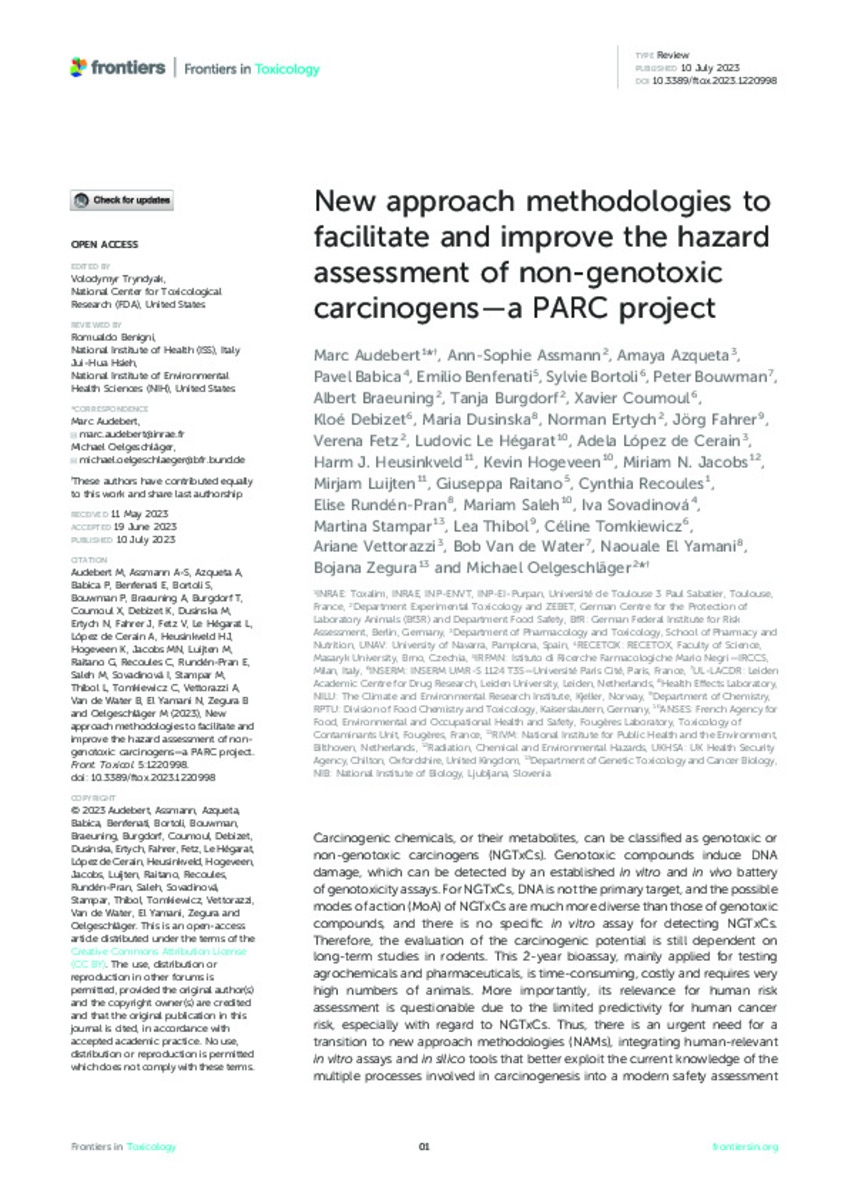Cita:
Audebert M, Assmann A-S, Azqueta A, Babica P, Benfenati E, Bortoli S, Bouwman P, Braeuning A, Burgdorf T, Coumoul X, Debizet K, Dusinska M, Ertych N, Fahrer J, Fetz V, Le Hégarat L, López de Cerain A, Heusinkveld HJ, Hogeveen K, Jacobs MN, Luijten M, Raitano G, Recoules C, Rundén-Pran E, Saleh M, Sovadinová I, Stampar M, Thibol L, Tomkiewicz C, Vettorazzi A, Van de Water B, El Yamani N, Zegura B and Oelgeschläger M (2023) New approach methodologies to facilitate and improve the hazard assessment of non-genotoxic carcinogens—a PARC project. Front. Toxicol. 5:1220998. doi: 10.3389/ftox.2023.1220998







